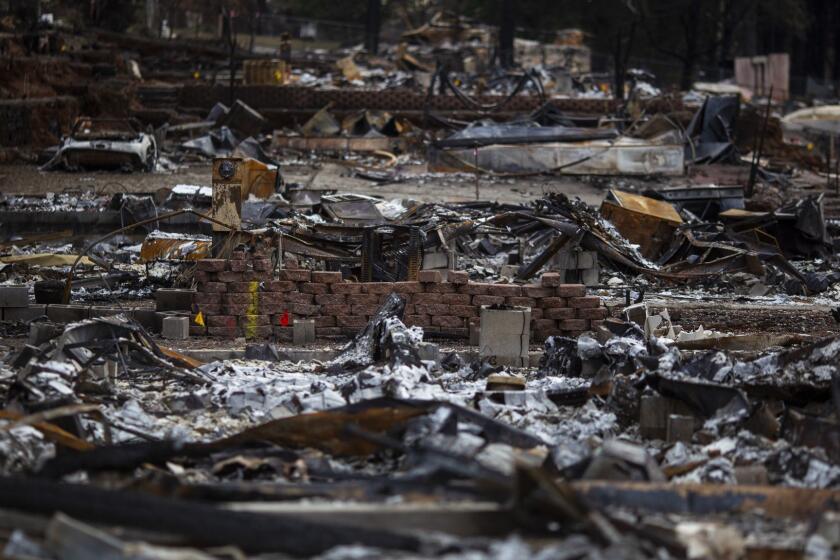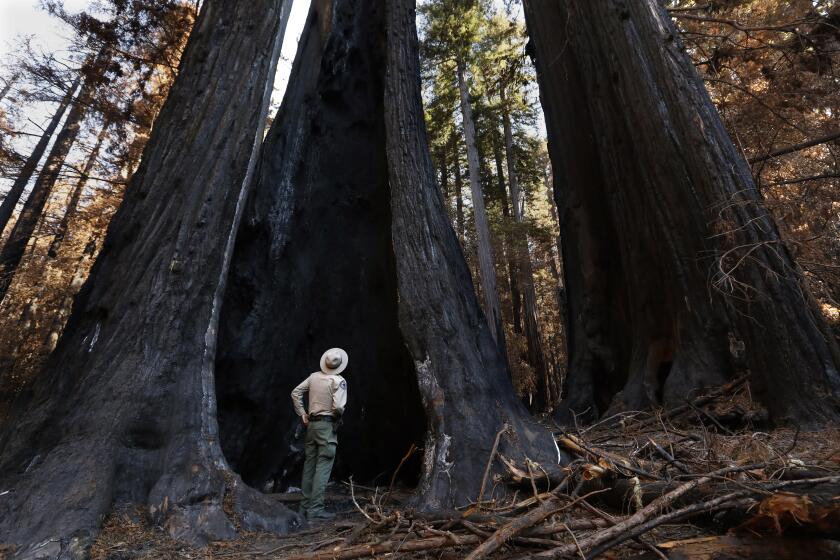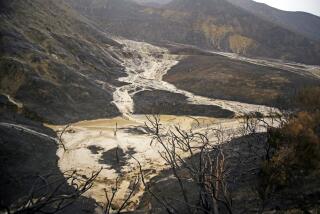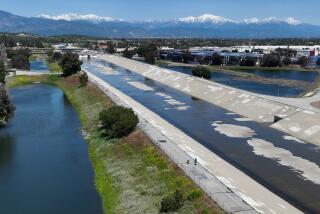Wildfires can pollute drinking water. That worries some in the hills above Santa Cruz
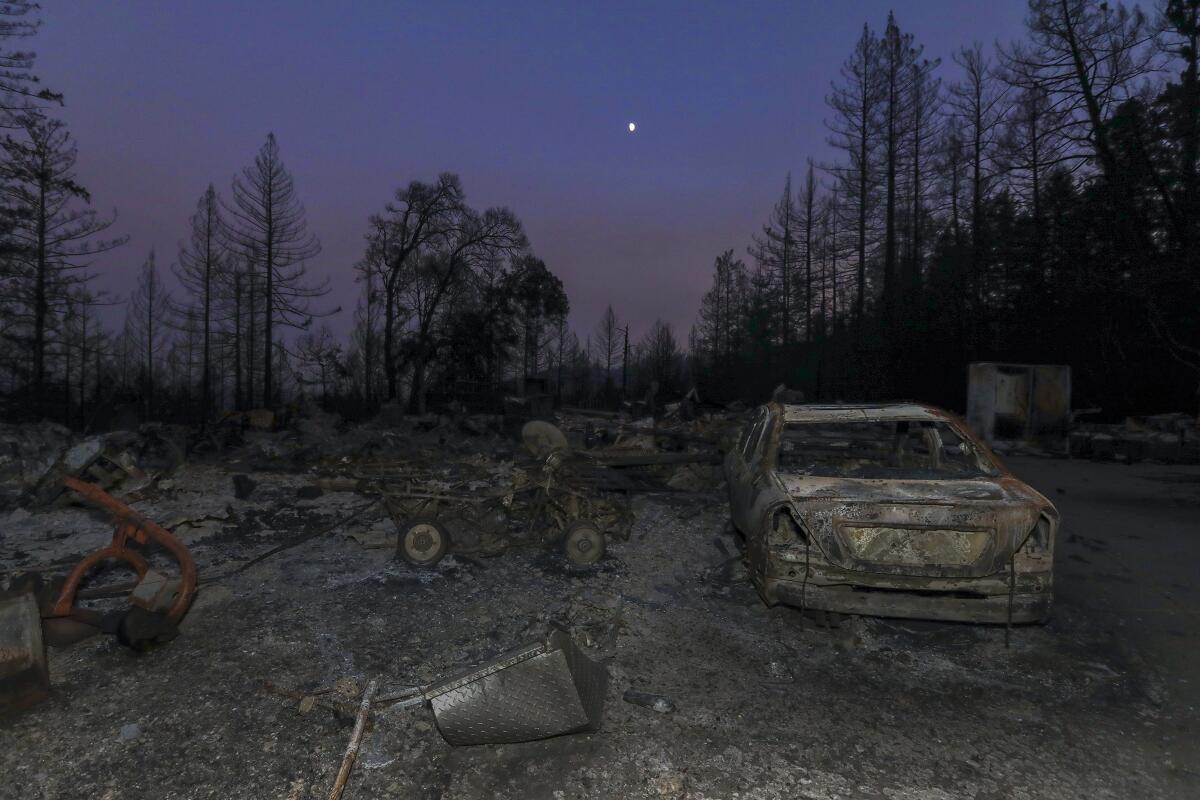
BOULDER CREEK, Calif. — As the first heavy rains of the season poured across the Santa Cruz Mountains last month, emergency responders and residents braced for debris flows, road closures and power outages.
Others also feared for their drinking water. These included Boulder Creek resident Dan Fitzpatrick, who amid the downpours pictured the rain washing over burned-out neighborhoodsand into the catchment system of his water provider.
“Every storm that has occurred since the fire has caused the water to run black for a few days, so I know runoff is making it into the water,” said Fitzpatrick, a former member of his water district’s engineering committee.
While noting that burnt vegetation causes much of the black gunk, he added that there is “probably more than just carbon in that soot.”
Across the West, water districts are grappling with new and increasingly common challenges as fire seasons grow longer and blazes consume more suburbs and smaller communities. These fires are not only destroying people’s homes and treasured possessions, they are leaving behind an array of incinerated plastics, lead, pesticides and other toxic particles that have the potential to contaminate water supplies.
Though water managers in the Santa Cruz Mountains say their supplies are safe — before heavy rains, they start pumping groundwater instead of relying on catchment water or supplies from the San Lorenzo River — scientists say this new field of environmental concern deserves more attention.
“We’re really on the ground floor when it comes to the effects of fire on municipal water supplies in this urban wildfire nexus,” said Fernando Rosario-Ortiz, director of the environmental engineering program at the University of Colorado in Boulder. “We are learning that there’s a lot we really don’t know.”
Drinking water was polluted after the 2017 Tubbs fire in Sonoma and Napa counties and the 2018 Camp fire that devastated the town of Paradise. High levels of benzene, a recognized carcinogen, were found in drinking water in both fire zones.
The drinking water in Paradise, Calif., where 85 people died last year in the nation’s worst wildfire in a century, is contaminated with the cancer-causing chemical benzene, officials said.
Runoff from charred homes and businesses is another concern.
Months before the rainy season, the CZU August Lightning Complex Fire had battered water districts in the Santa Cruz Mountains, a rugged stretch of redwoods between the Pacific Ocean and Silicon Valley. The blaze, which burned for 38 days, killed one person, burned 86,509 acres, destroyed more than 1,400 structures and damaged drinking water infrastructure.
For weeks, residents in Boulder Creek, Ben Lomond and Felton were without drinking water. In some areas — particularly those close to Big Basin Redwoods State Park, and served by the smaller Big Basin Water District — residents didn’t get water back until early January.
“In the early stages, we were not even maintaining fire flow,” said Rick Rogers, general manager of the San Lorenzo Valley water district, explaining how water was unavailable for firefighting. “We just had enough for critical, potable water.”
Damien Moore, general manager for Big Basin, declined an interview, explaining that he was busy in the field, maintaining water flow to his customers.
Burnt piping and equipment, as well as potentially contaminated supplies, were largely to blame for the water shortage. In the case of San Lorenzo Valley Water, five out of the six water intakes in the upper part of the district were destroyed, as was half of its storage infrastructure.
Most of that has been since been restored, said Rogers, but not without putting strain on the system.
During a typical year, the system relies on both ground and surface water, in a roughly 50-50 split.
During the wetter winter months, surface water is preferred — it is plentiful and clean-tasting, Rogers said. Before big storms, however, those systems are temporarily shut down as the water becomes turbid and cloudy after it rains, making it difficult to treat and disinfect.
As spring moves into summer and surface water sources diminish, the district looks to its underground reserves. But relying too much on those supplies — as occurred this year — creates its “fear factor,” Rogers said.
Groundwater reserves require continuous pumping to run, which strains the small district’s engineering and maintenance crew. In addition, groundwater reserves are not limitless — a concern as the region heads into another dry winter with rain levels far below normal.
More rain is expected in the Bay Area this weekend, and though that could be good for water supplies, it adds to the risk of mudslides, blocking access for water district workers.
Three years ago, district engineers discovered one of the access roads sat atop a “considerable” ancient landslide, where the ground movement is 80 feet below the surface. That’s required an expensive $15-million repair that the district is only now beginning to address.
Continuing rains also could further spread contamination on the ground.
Two months after fires burned through Big Basin Redwoods State Park, some scientists are wondering whether the park will ever truly come back.
Although Phase I of the EPA’s fire and debris removal is complete in the region, Phase II has only just begun, leaving behind sources of toxic chemicals that could wash into catchment systems designed to collect rainwater.
Nate Gillespie, the district’s supervisor for water treatment systems, says the district checks for these pollutants. The most recent tests, which the district received Feb. 9, showed “non-detect” levels for volatile organic compounds, the pollutants of concern.
But it’s unclear how long some of the pollutants can linger, how they mobilize in surface waters or in storage, and how mild turbidity after a rain can affect the disinfection process.
“The reality is that water-quality research has really lagged,” Rosario-Ortiz said. “We’re really only just beginning to understand what is happening.”
The good news is that water districts across much of the West are talking to one another and sharing best practices.
“We’re learning from the folks in Sonoma and Paradise,” Rogers said.
More to Read
Sign up for Essential California
The most important California stories and recommendations in your inbox every morning.
You may occasionally receive promotional content from the Los Angeles Times.
